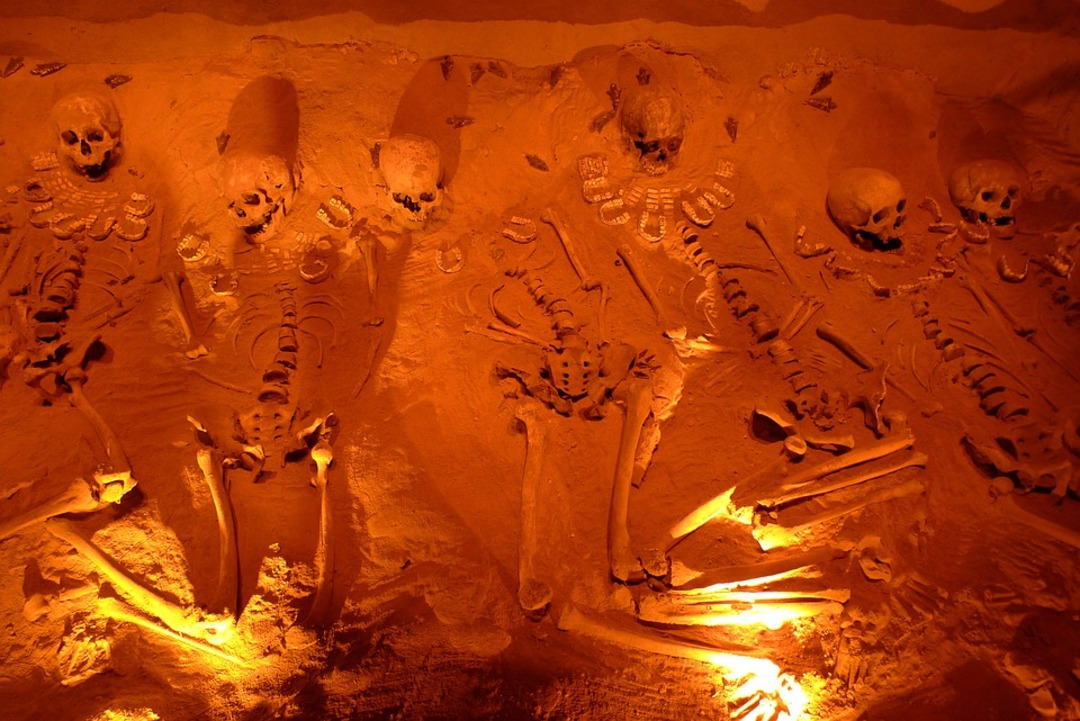-
1.4M-year-old bones excavated in northern Spain could rewrite human prehistory

Facial bones dating back 1.4 million years are the oldest human fossils ever unearthed on the European continent and could end up changing the book of human prehistory, according to scientists involved in the landmark find, the Anadolu Agency reported.
“We don’t yet know which first human species the fragments found belonged to,” archaeologist Aurora Martin, general coordinator of the Museum of Human Evolution in Burgos, northern Spain, told Anadolu Agency.
She added: The bones, found at the end of June at the caves of the Sierra de Atapuerca excavation site near Burgos, constitute “a breakthrough that will help rewrite the history of human evolution."
She explained: "Until 1994, it was known that there were no ancient human species in Europe until 500,000 years ago. Now we’re talking about 1.4 million years ago. In other words, we pushed back the evolution of humans in Europe 1 million years."

"The new invention, which is the facial parts of a species, unearthed in the summer of 2022, belongs to 1.4 million years ago. This opens new doors for us and makes us ask a lot of new questions.
We will try to find answers to these, but they will all be after research. We can’t give an answer right now,” she added.
Palestinian farmer unearths rare Byzantine-era mosaic in Gaza
The Atapuerca site was discovered during railway work at the end of the 19th century, and the first excavations began in 1976.
The oldest human fossils previously ever found on the European continent were unearthed in the region in 2007, dating back to 1.2 million years old.
Ancient Stone Age human and animal fossils unearthed in Atapuerca, a World Heritage Site, are on display at the Museum of Human Evolution in Burgos.
Source: aa
You May Also Like
Popular Posts
Caricature
BENEFIT Sponsors Gulf Uni...
- April 17, 2025
BENEFIT, the Kingdom’s innovator and leading company in Fintech and electronic financial transactions service, has announced its sponsorship of the “Innovation and Sustainable Technology Solutions Competition (GU - IST Solutions), hosted by Gulf University at its main campus.
This strategic sponsorship reflects BENEFIT’s active role in advancing technological innovation and fostering sustainable solutions to future challenges. It also seeks to empower Bahraini youth by enhancing their skills, capabilities, and competitiveness in innovation and solution development—contributing meaningfully to the broader goals of sustainable development across all sectors.
As part of BENEFIT’s active involvement in the competition, the company has announced that Hanan Abdulla Hasan, Senior Manager of Public Relations and Communication, will serve on the competition’s supervisory committee. Her upcoming participation reflects BENEFIT’s forward-looking commitment to championing academic and professional excellence.
Commenting on the occasion, Hanan Abdulla Hasan, Senior Manager of Public Relations and Communication at BENEFIT, said, “We are privileged to support this pioneering initiative, which aligns seamlessly with BENEFIT’s enduring commitment to fostering innovation and nurturing the potential of Bahrain’s youth. Our participation is rooted in a deep sense of social responsibility and a firm belief in the pivotal role of innovation in shaping a sustainable future. Through such platforms, we seek to empower the next generation with the knowledge, skills, and foresight required to develop impactful solutions that address future challenges, in line with the United Nations Sustainable Development Goals 2030.”
Dr. Aseel Al Ayash Dean of the College of Engineering in Gulf University commented, “We extend our sincere gratitude to BENEFIT for their generous sponsorship and support of the Innovation and Sustainable Technology Solutions Competition. This contribution plays an instrumental role in helping us achieve the strategic goals of this initiative, namely, cultivating a culture of innovation and sustainability, encouraging efforts that address the imperatives of sustainable development, and enhancing the practical and professional capabilities of our students and participants.”
The event will bring together a diverse spectrum of participants, including secondary school students, university undergraduates, engineers, industry professionals, entrepreneurs, academic researchers, and subject matter experts representing a wide range of disciplines.
The competition seeks to inspire participants to develop and present innovative, sustainable technologies aimed at addressing pressing environmental, social, and economic challenges. It encourages the formulation of business models that integrate advanced technological solutions with core principles of sustainability. Moreover, it serves as a platform for emerging leaders, entrepreneurs, and innovators to contribute to the advancement of the Sustainable Development Goals, promote the ethos of responsible technology, and demonstrate its transformative potential across various sectors.
Attendees will have the opportunity to view a series of project presentations submitted by participants, covering diverse areas such as eco-friendly product design, smart and sustainable innovations, renewable energy technologies, water conservation and management, waste minimisation and recycling, green architectural solutions, and sustainable transportation systems. Outstanding projects will be formally recognised and awarded at the conclusion of the event.
opinion
Report
ads
Newsletter
Subscribe to our mailing list to get the new updates!






















